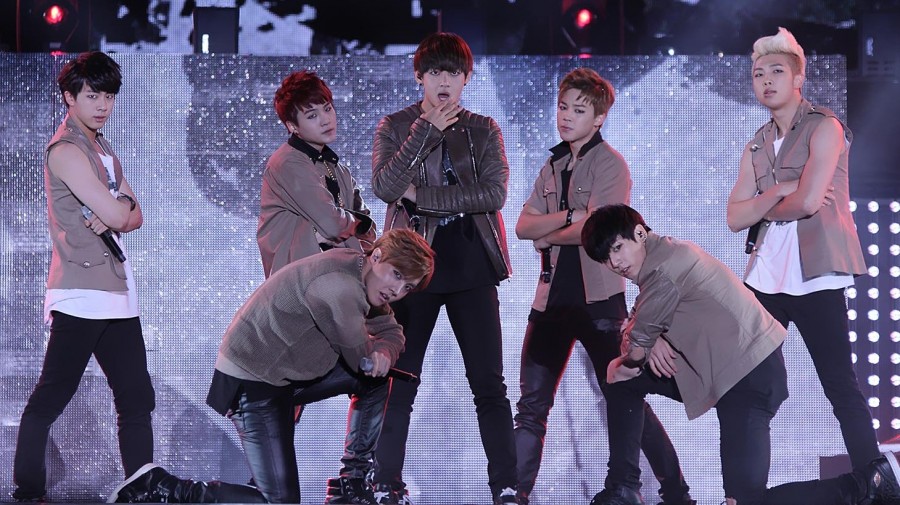Have you heard of Hallyu? If you have watched a Korean dorama, listened to a song by a Korean band, or made the heart symbol with your fingers, all of this is part of Hallyu. This expression is the name given to the "Korean wave," meaning the increase in cultural visibility worldwide. Although we have noticed that Korean pop culture has been more present in recent years, the term itself has been around for several decades. Let's see how Korean culture has conquered much of the world.

Table of Content
How did Hallyu come about?
Hallyu emerged in the 90s, when in China and the USA, when cultural aspects of South Korea began to become popular there. The term was first used by journalists in Beijing when they were surprised by the emergence of so many aspects of South Korea in China.
The first to expand outside of South Korea were the K-Dramas. Next came the Korean pop music, K-Pop, with the help of YouTube that breaks any cultural barrier. Nowadays, these aspects are already in Latin America, Middle East, North Africa, South Africa, North America, and Europe.
Aspects of Korean culture came out of their personal contact and came to be desired by the world beyond songs and dramas are the way to dress (K-Fashion), steps to take care of the skin, (K-Beauty), Korean food (K -Food), cultural aspects and language (K-Culture), comics (Manhwas) and technology such as cars, smartphones and games.
Hallyu is also a variation on Soft Power which is basically the power of influence from one country to another. Soft Power in English is “soft power”, and the expression is from Professor Joseph Nye Jr. This applies from several factors in addition to cultural and financial aspects.
Interestingly, this kind of 'domination' is quite right as the rise of Korean culture and any other in a given country means money in and out. To join a part of another culture, you need to invest in internet, streaming, accessories, internet ordering and others. So this factor is healthy for the economy, especially for the place that exports.
The world economy with Hallyu
How much do you imagine the revenue in pop culture has been in recent years? Well, a specific value is somewhat difficult to provide because the dollar value is always changing, each country has its own level of consumption. But the certainty is that this market generates billions of dollars. According to the portal Poder 360, in 2021 the South Korean government invested more than 7 billion reais.
Big changes in the South Korean cultural sector have affected the market as the popularity and demand for everything related to South Korea has increased. From 2003 to 2018, tourism increased by more than 40%, just from Brazilians visiting the country, now imagine the rest of the world?! Something also surprising was the film Parasita, the first South Korean film to be nominated for an Oscar and also won 4 statuettes! The film grossed over 139 million dollars.

BTS one of the most famous Korean bands are among the highest paid bands in the world. But not always the South Korean government invested in culture, they started to support music to promote festivals. In 1998, after going through an economic crisis, the government started to invest in the creative industry.
The application of the power of Korean culture happens in a very strategic way, as the growth in music and film markets causes the involved artists to be used to attract more people. For example, most of the people who visited South Korea in 2019 stated that they came because of the influence of the group BTS and not because of other aspects of the place.
Another example is that the same band was chosen because of its international relevance to represent South Korea at the UN (United Nations) to symbolize public diplomacy for future generations and culture. Actresses and other groups are also part of campaigns to promote culture, nature, charity and other things and all this attracts more people to contribute to the worldwide phenomenon of the Korean wave.

Pandemic: determining factor for the spread of Korean pop culture
The COVID-19 pandemic started in 2020 and with the quarantine that took many by surprise, most didn't know what to do after being stopped for so many days. It was during this period that the increase in streaming subscriptions increased, people started taking online courses and dancing at home as a form of exercise.
It didn’t take long to see K-Dramas among the most watched series on Netflix, to increase demand for language courses to learn Korean without leaving home, to make Korean groups the most heard on musical platforms and even learn the choreography. The way of life for many has changed during the pandemic and K-pop has been able to keep up.

During this period, Brazil ranked third among the world's largest consumers of K-Dramas. Second is Thailand, and in first place is Malaysia. Probably these doramas grow so much because of the variety of plots they have; although they have long episodes, there are few episodes. Generally, the cast includes well-known singers and actors and famous actresses, showing more details of South Korean culture and other factors.
In an interview with Suki Desu, 31-year-old Stephany Ribeiro explained why she likes Korean culture so much: “What strikes me most is the respectful way Koreans behave, especially with their elders. It is also a country that places extreme value on education.” She is among the people who have come to follow Korean culture more closely during the pandemic.
The businesswoman believes that Hallyu is not a passing fad: “There is still a prejudice about K-pop that will pass once people recognize how talented they are. It is a culture on the rise.” Stephany is a lettering artist and works with custom and one of her first impressions was a mug that showed her love for pop culture.

What strikes you the most about South Korean culture?

